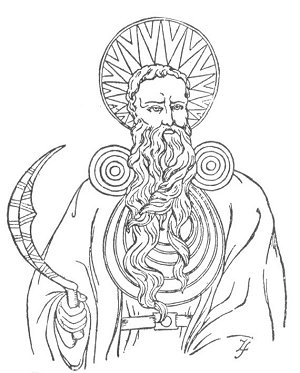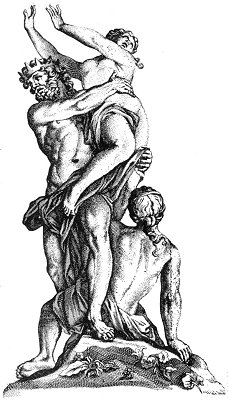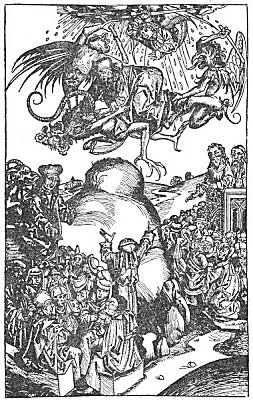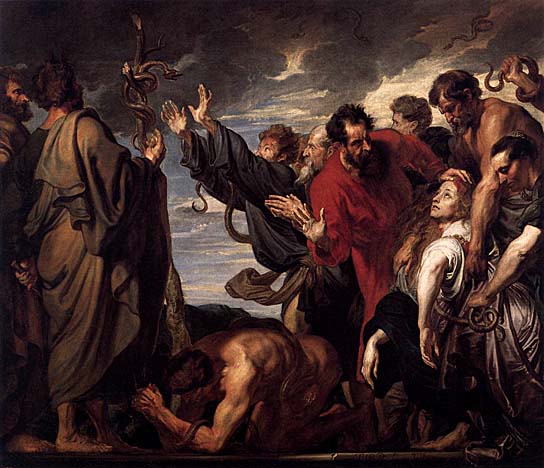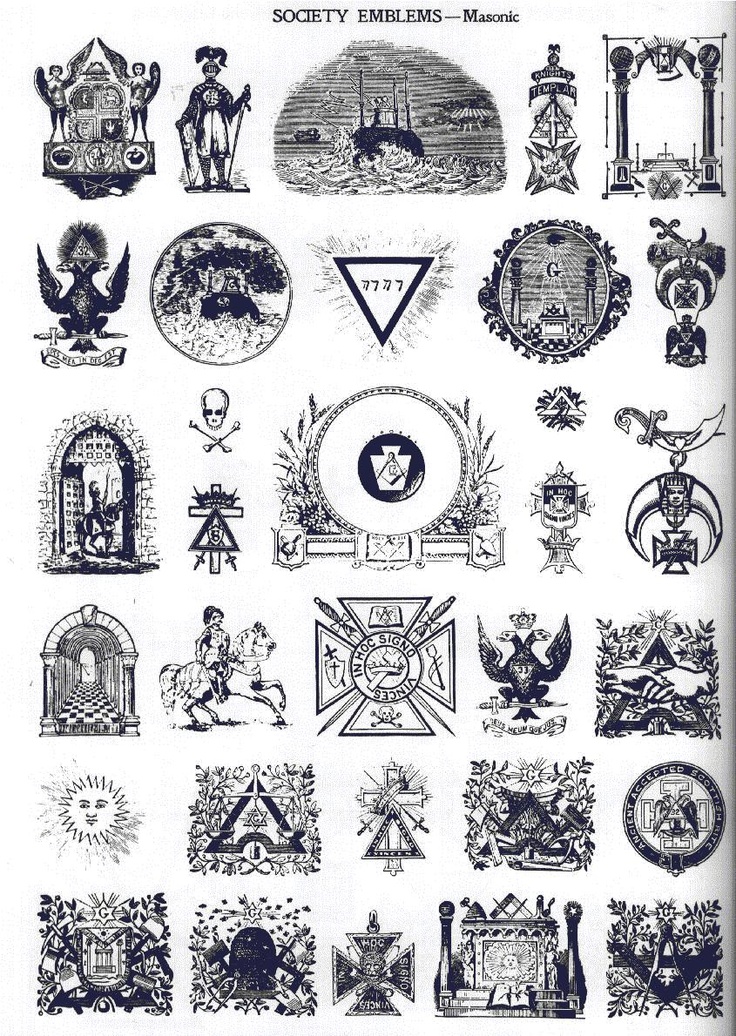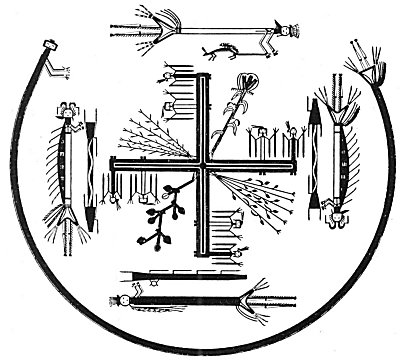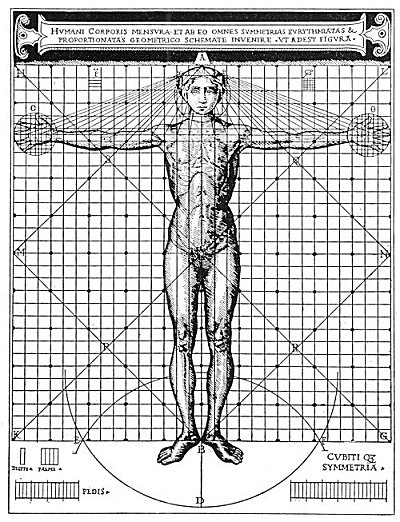Not only was the mistletoe sacred as symbolic of the universal medicine, or panacea, but also because of the fact that it grew upon the oak tree. Through the symbol of the oak, the Druids worshiped the Supreme Deity; therefore, anything growing upon that tree was sacred to Him. At certain seasons, according to the positions of the sun, moon, and stars, the Arch-Druid climbed the oak tree and cut the mistletoe with a golden sickle consecrated for that service. The parasitic growth was caught in white cloths provided for the purpose, lest it touch the earth and be polluted by terrestrial vibrations. Usually a sacrifice of a white bull was made under the tree.
The Druids were initiates of a secret school that existed in their midst. This school, which closely resembled the Bacchic and Eleusinian Mysteries of Greece or the Egyptian rites of Isis and Osiris, is justly designated the Druidic Mysteries. There has been much speculation concerning the secret wisdom that the Druids claimed to possess. Their secret teachings were never written, but were communicated orally to specially prepared candidates. Robert Brown, 32°, is of the opinion that the British priests secured their information from Tyrian and Phœnician navigators who, thousands of years before the Christian Era, established colonies in Britain and Gaul while searching for tin. Thomas Maurice, in his Indian Antiquities, discourses at length on Phœnician, Carthaginian, and Greek expeditions to the British Isles for the purpose of procuring tin. Others are of the opinion that the Mysteries as celebrated by the Druids were of Oriental origin, possibly Buddhistic.
The proximity of the British Isles to the lost Atlantis may account for the sun worship which plays an important part in the rituals of Druidism. According to Artemidorus, Ceres and Persephone were worshiped on an island close to Britain with rites and ceremonies similar to those of Samothrace. There is no doubt that the Druidic Pantheon includes a large number of Greek and Roman deities. This greatly amazed Cæsar during his conquest of Britain and Gaul, and caused him to affirm that these tribes adored Mercury, Apollo, Mars, and Jupiter, in a manner similar to that of the Latin countries. It is almost certain that the Druidic Mysteries were not indigenous to Britain or Gaul, but migrated from one of the more ancient civilizations.
The school of the Druids was divided into three distinct parts, and the secret teachings embodied therein are practically the same as the mysteries concealed under the allegories of Blue Lodge Masonry. The lowest of the three divisions was that of Ovate (Ovydd). This was an honorary degree, requiring no special purification or preparation. The Ovates dressed in green, the Druidic color of learning, and were expected to know something about medicine, astronomy, poetry if possible, and sometimes music. An Ovate was an individual admitted to the Druidic Order because of his general excellence and superior knowledge concerning the problems of life.
The second division was that of Bard (Beirdd). Its members were robed in sky-blue, to represent harmony and truth, and to them was assigned the labor of memorizing, at least in part, the twenty thousand verses of Druidic sacred poetry. They were often pictured with the primitive British or Irish harp–an instrument strung with human hair, and having as many strings as there were ribs on one side of the human body. These Bards were often chosen as teachers of candidates seeking entrance into the Druidic Mysteries. Neophytes wore striped robes of blue, green, and white, these being the three sacred colors of the Druidic Order.
The third division was that of Druid (Derwyddon). Its particular labor was to minister to the religious needs of the people. To reach this dignity, the candidate must first become a Bard Braint. The Druids always dressed in white–symbolic of their purity, and the color used by them to symbolize the sun.
In order to reach the exalted position of Arch-Druid, or spiritual head of the organization, it was necessary for a priest to pass through the six successive degrees of the Druidic Order. (The members of the different degrees were differentiated by the colors of their sashes, for all of them wore robes of white.) Some writers are of the opinion that the title of Arch-Druidwas hereditary, descending from father to son, but it is more probable that the honor was conferred by ballot election. Its recipient was chosen for his virtues and
THE ARCH-DRUID IN HIS CEREMONIAL ROBES.
From Wellcome’s Ancient Cymric Medicine. The most striking adornment of the Arch-Druid was the iodhan moran, or breastplate of judgment, which possessed the mysterious Power of strangling any who made an untrue statement while wearing it. Godfrey Higgins states that this breastplate was put on the necks of witnesses to test the veracity of their evidence. The Druidic tiara, or anguinum, its front embossed with a number of points to represent the sun’s rays, indicated that the priest was a personification of the rising sun. On the front of his belt the Arch-Druid wore the liath meisicith–a magic brooch, or buckle in the center of which was a large white stone. To this was attributed the power of drawing the fire of the gods down from heaven at the priest’s command This specially cut stone was a burning glass, by which the sun’s rays were concentrated to light the altar fires. The Druids also had other symbolic implements, such as the peculiarly shaped golden sickle with which they cut the mistletoe from the oak, and the cornan, or scepter, in the form of a crescent, symbolic of the sixth day of the increasing moon and also of the Ark of Noah. An early initiate of the Druidic Mysteries related that admission to their midnight ceremony was gained by means of a glass boat, called Cwrwg Gwydrin. This boat symbolized the moon, which, floating upon the waters of eternity, preserved the seeds of living creatures within its boatlike crescent.

Moe is the founder of GnosticWarrior.com. He is a father, husband, author, martial arts black belt, and an expert in Gnosticism, the occult, and esotericism.

